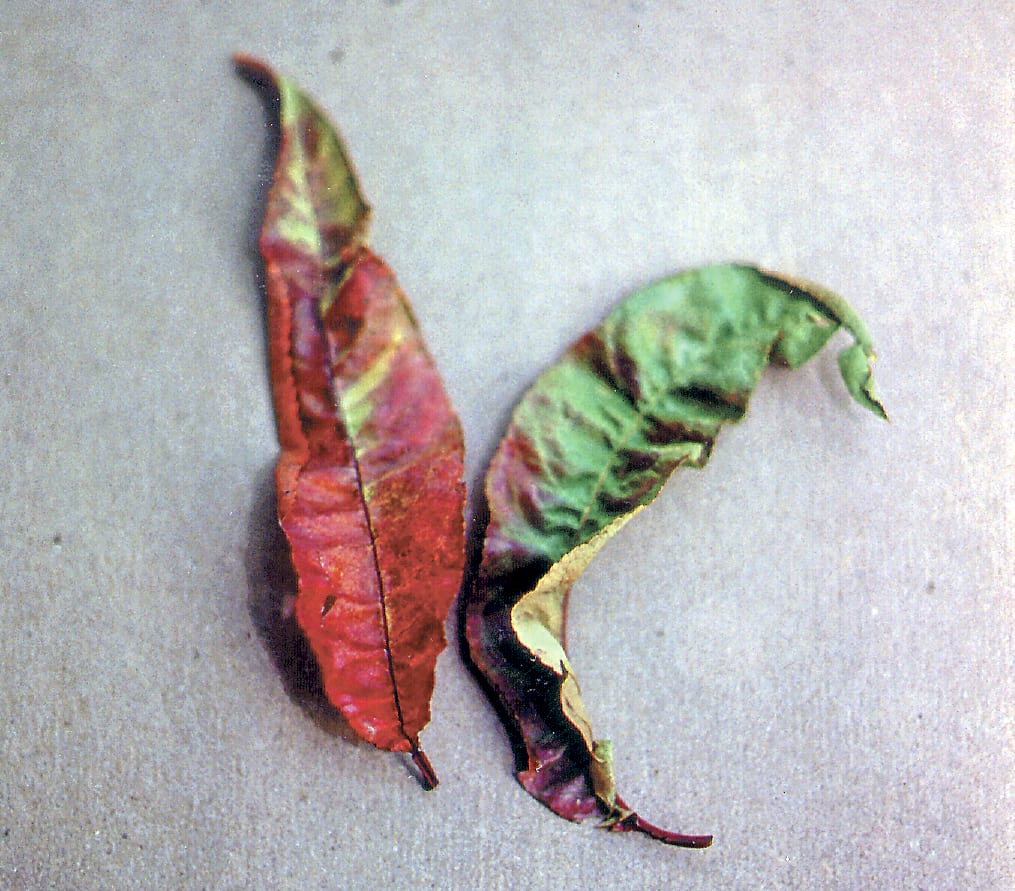Phosphorus in plant tissue depends on the phosphorus content in the soil. Phosphorus in plants ranges from 0.2%-0.8% of the total dry substance. It is more abundant throughout the plant than are sulfur and magnesium, and less than calcium. Mycorrhizal fungi are thought to play a key role in making phosphorus in soil available to plant roots.
Phosphorus is an essential element. It functions directly and indirectly in metabolism. Lack of phosphorus leads to stunting and can also affect protein formation, leading to high concentrations of sugar and causing purple symptoms similar to nitrogen deficiency. Phosphorus is also important in root development.
The symptoms on broadleaf plants are the leaves are green to dark green; veins, petioles, and lower surfaces dull bronze to purple, especially when young; foliage may be sparse, slightly smaller than normal, and distorted; leaves drop early. Shoots are of normal length unless deficiency is severe, but they are smaller in diameter. Flowers are few. Fruit sparse and small.
The symptoms on conifers are purple needles in young seedlings, starting at tips of lower needles
and progressing inward and upward. Few or no second year needles occur. The needles die, starting in lower regions and spreading upward. Buds set early. Tree foliage appears dull-blue or gray-green. Roots sparse with no mycorrhizae.


